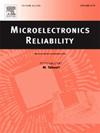High-frequency organic dielectric substrate materials have been widely applied in the fabrication of FCBGA (Flip Chip Ball Grid Array) substrates due to their excellent characteristics of high-speed signal transmission. However, their higher coefficient of thermal expansion (CTE) causes the CTE mismatch between the chip and substrate to increase. High-temperature heating during the reflow soldering process intensifies the thermal mismatch within packaging structure, causing severe warping of the substrate, thereby reducing the yield and subsequent reliability. This study adopted a flatness analyzer and scanning electron microscope (SEM) to characterize the package deformation and micromorphology, and found that the substrate warped after reflow soldering, which caused defects such as chip cracks and micro-bump delamination. A fine finite element simulation model was constructed based on the structure of the experimental sample, and the structure deformation during the soldering process was simulated. An accurate finite element simulation model was constructed based on the structure of the experimental sample to simulate the deformation process of substrate during reflow. Research results show that the constraint of the chip on the substrate during the soldering process is the main factor affecting the thermal deformation mechanism, and the deformation can be suppressed by adding stiffener. This research benefits to the design of FCBGA high-density packaging.


